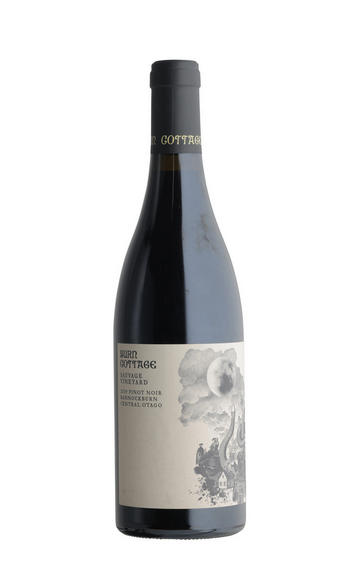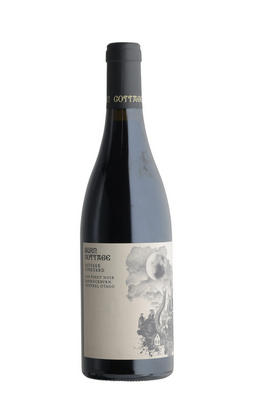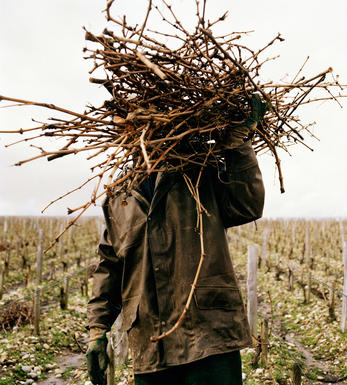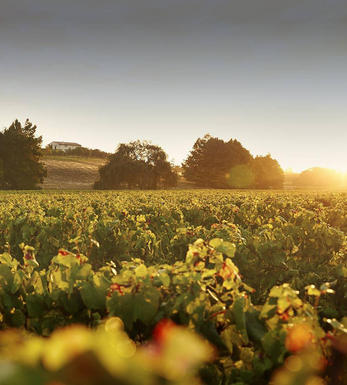
2019 Burn Cottage, Sauvage Vineyard Pinot Noir, Bannockburn, Central Otago, New Zealand

Critics reviews
For the minority that are interested, this is a combination of four clones off a 20-year-old vineyard in Bannockburn that Burn Cottage acquired in 2018. It spends nearly 4 weeks on skins before being pressed and is matured in 27% new oak. The abv is 14%.
Hailing from the treasure island of Central Otago, the 2019 Pinot Noir Sauvage Vineyard is a true delight, offering rich power and fragrance while remaining elegant and composed. The body is mid-weight at most, but it has a sense of substance along with being light on its feet. There's clarity of fruit flavours as well as intriguing wild herbs like thyme and rosemary. While being fresh and approachable already, it has an innate tannic richness, which holds the wine and will provide grace while it evolves.
Drink 2023 - 2033
Rebecca Gibb MW, Vinous.com (April 2023)
This has aromas of dried strawberries, cherries, thyme, crushed stones and citrus rind. Compact and tight with a fine minerality, medium body and tight-grained tannins. Very focused.
Better after 2023
James Suckling, JamesSuckling.com (December 2022)
About this WINE

Burn Cottage Vineyard
Burn Cottage Vineyards is a twenty four hectare estate in the foothills of the Pisa range in Central Otago, New Zealand. The vineyard is owned by the Sauvage family who purchased the property in 2002. Alongside head winemaker, Ted Lemon, they have converted this piece of previously farmed land into a truly hidden gem.
Biodynamically farmed from the start, producing Pinot Noir that is turning heads. Some of the best to currently come out of the southern hemisphere. The climate of Central Otago can best be described as ‘continental’ with warm summers and cold winters, perfect for making world class, subtle & elegant Pinot Noir.

Central Otago
Central Otago is the most southerly wine region in the world and is responsible for five-point-five percent of a href=/region-3-new-zealand>New Zealand's vines (1,253 hectares in 2006). Central Otago was first identified as a site of serious Pinot potential in 1895 by Italian viticulturalist Romeo Bragato, drafted in by the government to treat the Phylloxera louse, subsequently recommending grafted rootstocks as a remedy in 1901. It had been thought to be worth even more during the Gold Rush days of the 1860s, before being turned over to merino sheep and later fruit orchards until the 1970s. In 1976, Gibbston Valley's alluvial gravel soils were the first to be planted in the area.
It's a measure of the success of the Central Otago ‘brand’, and the appeal of its full-bodied Pinot Noirs, that the region has experienced a 350 percent increase in the vines planted there, and a 125 percent increase in the number of new wineries over the same period (up to 89, or 16 percent of the country's total); as per b>Marlborough's relationship with a href=/grape-sb-sauvignon-blanc>Sauvignon Blanc, b>Pinot Noir now represents approximately 75 percent of the Central Otago vineyards. That the region's capital, Queenstown, annually plays host to the country's Pinot Noir forum is further proof of the region's significance. More controversially, the recent rush to secure vineyards within this now fashionable viticultural zone has led to a rash of criticism over the quality of some of the newcomers.
Located at the foot of South Island, the region may be on the 45th parallel south, but its site among the Bannockburn Hills of the Southern Alps (at approximately 200 metres above sea level) ensures a continental climate, if one dogged by frosts and marked by significant swings in temperature (up to 40 degrees Celsius at times). Soil profiles vary between the deep silt loams of the Bannockburn sub-region, while the wider Cromwell Basin displays both sandy loam over calcium deposits as well as alluvial loess over schist. Vinification typically involves French-oak barrel ageing of between 10 to 18 months.
Stylistically, the Gibbston Valley wines (such as those of Peregrine Wines) show a sweet, soft red raspberry and strawberry fruitiness, while the warmer Bannockburn/Loburn areas produce more powerful, tannic styles with black cherry and thyme notes b>Felton Road's range is a prime example. Fine Riesling is also produced amongst the schistous soils.
Recommended producers: Amisfield Estate, a href=/producer-3606-felton-road>Felton Road, Peregrine Wines, Ostler Vineyard.

Pinot Noir
Pinot Noir is probably the most frustrating, and at times infuriating, wine grape in the world. However when it is successful, it can produce some of the most sublime wines known to man. This thin-skinned grape which grows in small, tight bunches performs well on well-drained, deepish limestone based subsoils as are found on Burgundy's Côte d'Or.
Pinot Noir is more susceptible than other varieties to over cropping - concentration and varietal character disappear rapidly if yields are excessive and yields as little as 25hl/ha are the norm for some climats of the Côte d`Or.
Because of the thinness of the skins, Pinot Noir wines are lighter in colour, body and tannins. However the best wines have grip, complexity and an intensity of fruit seldom found in wine from other grapes. Young Pinot Noir can smell almost sweet, redolent with freshly crushed raspberries, cherries and redcurrants. When mature, the best wines develop a sensuous, silky mouth feel with the fruit flavours deepening and gamey "sous-bois" nuances emerging.
The best examples are still found in Burgundy, although Pinot Noir`s key role in Champagne should not be forgotten. It is grown throughout the world with notable success in the Carneros and Russian River Valley districts of California, and the Martinborough and Central Otago regions of New Zealand.


Buying options
Add to wishlist
Description
For the minority that are interested, this is a combination of four clones off a 20-year-old vineyard in Bannockburn that Burn Cottage acquired in 2018. It spends nearly 4 weeks on skins before being pressed and is matured in 27% new oak. The abv is 14%.
Hailing from the treasure island of Central Otago, the 2019 Pinot Noir Sauvage Vineyard is a true delight, offering rich power and fragrance while remaining elegant and composed. The body is mid-weight at most, but it has a sense of substance along with being light on its feet. There's clarity of fruit flavours as well as intriguing wild herbs like thyme and rosemary. While being fresh and approachable already, it has an innate tannic richness, which holds the wine and will provide grace while it evolves.
Drink 2023 - 2033
Rebecca Gibb MW, Vinous.com (April 2023)
wine at a glance
Delivery and quality guarantee